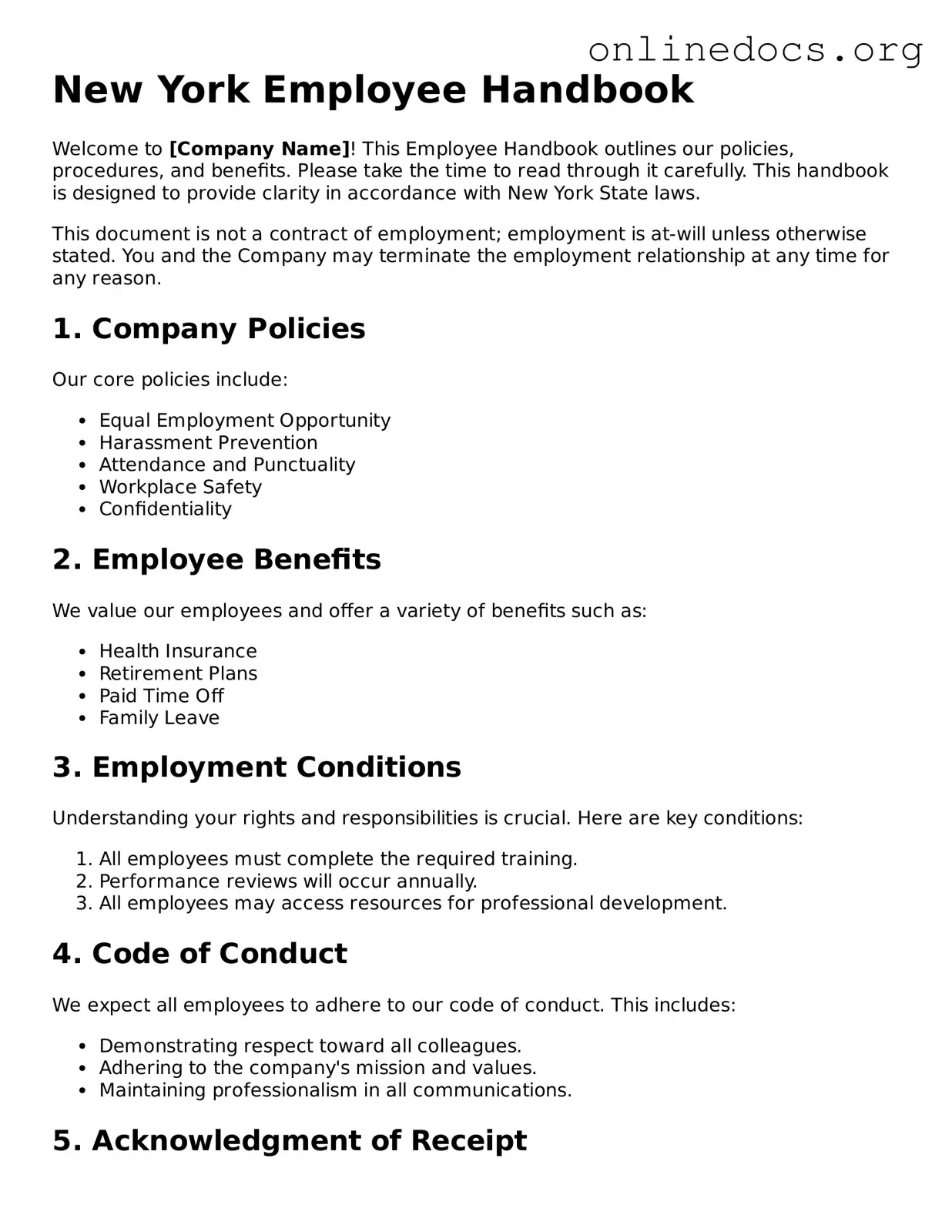The New York Employee Handbook form shares similarities with the Employee Manual. Both documents serve as comprehensive guides for employees, outlining company policies, procedures, and expectations. An Employee Manual often includes sections on workplace behavior, dress code, and attendance policies, much like the Employee Handbook. Each document aims to create a clear understanding of the workplace environment and helps ensure that employees know their rights and responsibilities.
Another similar document is the Company Policy Statement. This document, like the Employee Handbook, provides essential information regarding the company's rules and regulations. It covers topics such as anti-discrimination policies, harassment prevention, and disciplinary procedures. Both documents work together to promote a safe and respectful workplace, ensuring employees are aware of the standards expected of them.
The Orientation Guide is also akin to the Employee Handbook. While the Handbook serves as a long-term reference, the Orientation Guide is often provided during the onboarding process. It introduces new employees to the company culture, benefits, and key policies. Both documents aim to facilitate a smooth transition for new hires and ensure they feel informed and welcomed from day one.
The Code of Conduct is another document that aligns with the Employee Handbook. This document outlines acceptable behavior and ethical standards within the workplace. Both the Code of Conduct and the Handbook emphasize the importance of maintaining professionalism and integrity in all interactions. They provide a framework for employees to understand how their actions can impact the organization and their colleagues.
The Safety Manual is similar in its focus on workplace safety and health regulations. Both documents aim to protect employees by outlining safety protocols and emergency procedures. The Safety Manual provides specific instructions on how to handle hazardous situations, while the Employee Handbook may include general safety guidelines. Together, they promote a culture of safety and well-being within the organization.
The Texas RV Bill of Sale form is another important document that helps ensure clear communication during the sale of a recreational vehicle. This form outlines key information about the transaction, such as the buyer and seller details, vehicle specifications, and purchase price. Having a legal bill of sale can protect both parties in the event of disputes, providing a formal record of the sale. For specific guidance on drafting this document, consider visiting legalformspdf.com.
Additionally, the Benefits Guide is comparable to the Employee Handbook. This document details the various benefits offered by the company, including health insurance, retirement plans, and paid time off. While the Employee Handbook covers broader policies, the Benefits Guide focuses specifically on employee entitlements. Both documents are crucial for ensuring employees understand their compensation and benefits package.
Lastly, the Performance Review Policy document is similar to the Employee Handbook in that it outlines the evaluation process for employee performance. Both documents clarify expectations and provide guidelines for feedback and assessments. The Performance Review Policy details how evaluations are conducted, while the Employee Handbook may address how performance impacts promotions and raises. Together, they foster a culture of accountability and growth within the workplace.
